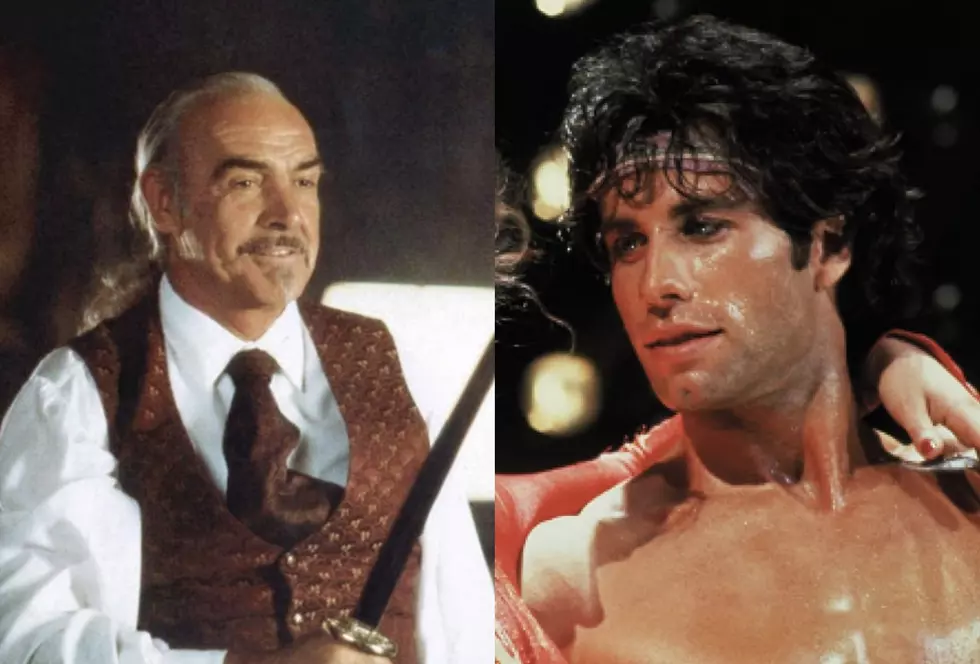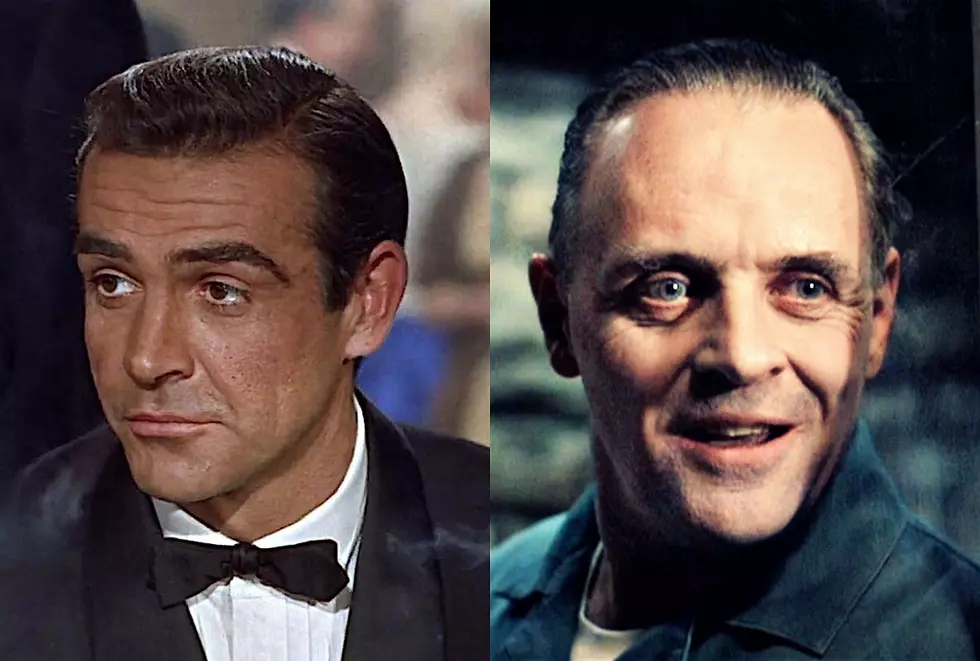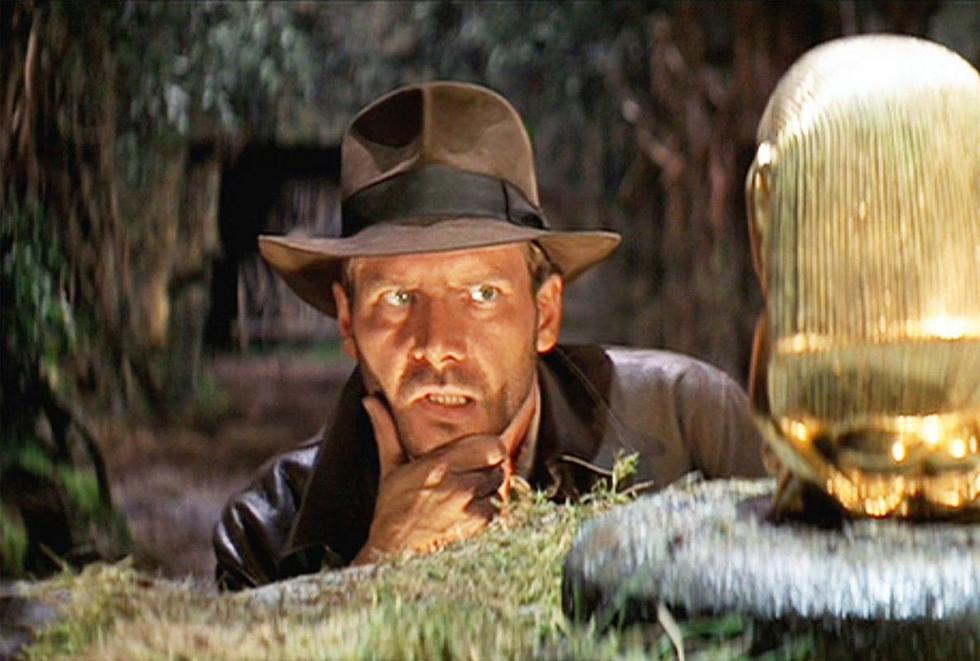
30 Years Ago: How Sean Connery Got Harrison Ford to Return as Indiana Jones
Steven Spielberg was coming off a disappointing Indiana Jones sequel, and the plot for a third film wasn't coming together. Harrison Ford, in fact, had already rejected two early scripts for the project that would become Indiana Jones and the Last Crusade.
Then James Bond came to the rescue – or Sean Connery did, anyway. Cast in the role of Indy's father, Henry Jones Sr., Connery brought both gravitas and a winking sense of competition to the proceedings. Ford immediately recognized how they could advance the original Raiders of the Lost Ark plot.
"I was quite pleased by the direction it took, by the deepening of the character," Ford told the Associated Press in 1989. "I was pleased by the relationship that was drawn between Indiana and his father, which makes this film very special." It needed to be.
Even Spielberg himself levied criticism against 1984's grim Temple of Doom. "I wasn't happy with the second film at all. It was too dark, too subterranean and much too horrific," he told the Sun-Sentinel in 1989. I thought it out-poltered Poltergeist. There's not an ounce of my own personal feeling in Temple of Doom."
A storyline involving the Holy Grail eventually took shape, but that presented its own challenges.
"The Ark of the Covenant [from the original film] was supposedly a real artifact," scriptwriter George Lucas later admitted, "whereas the Holy Grail – or at least the story surrounding it – is more of a myth. The Grail was the cup that Christ drank from at the Last Supper and was then used to catch his blood, and that was probably a real object. But the Arthur legend that came out of that was completely mythological. As a result, my initial ideas were very metaphysical and the Grail was difficult to define."
They ultimately settled on the idea that drinking from the authentic Grail would lead to immortality, while a sip from any other chalice would have the opposite effect: a quick death. This search for something bigger than ourselves, for something beyond this temporal life, matched perfectly with the notion of grappling with the sudden reappearance of one's father – and a father's legacy.
"I did not want Indy on a headlong pursuit without a subplot that was almost stronger than the actual quest itself," Spielberg added. "So, we came up with the father-son story because the Grail is symbolic of finding the truth in one's life – the truth we are always looking for, consciously or unconsciously. For me, that was represented by Indy and Henry meeting. In this context, the Grail made sense to me. They actually go after the Holy Grail, but their quest is also symbolic of their search for each other."
The search for the Holy Grail had been Henry Jones' life's work as a professor of medieval literature, to the point where he'd largely neglected his son. When Henry goes missing, Indiana Jones joins the search for his lost father, their lost relationship – and, of course, a certain legendary goblet.
Watch the Tank Chase Scene From 'Indiana Jones and the Last Crusade'
Connery was circumspect at first, asking Spielberg if the concept amounted to "Indiana Jones meets James Bond." Satisfied that there would be more to it, Connery eventually signed on – once some of the more crotchety elements of the original script were excised. He had a firm idea about how these two very independent, seeming very different characters would intersect.
"My reservations at the beginning were mainly to get a clearer picture of where we were going with this character, this father figure," Connery told the Lucasfilm Fan Club Magazine in 1989. "I like the idea of him being more like Sir Richard Burton, the explorer: much more active and academic to begin with, and then you realize what the genes were that produced this Indiana Jones. So, you get this picture of the action man with the academic but still very much a Victorian father. And therefore, you could get a lot of mileage out of the stunts and still play the father and be part of the relationship."
Ford said these contributions added an important new narrative layer to Indiana Jones and the Last Crusade, which premiered on May 24, 1989. "It was amazing for me, in how far he got into the script and went after exploiting opportunities for character,” Ford told Variety in 1997. "His suggestions to George at the writing stage really gave the character and the picture a lot more complexity and value than it had in the original screenplay."
The celebrated playwright Tom Stoppard was also brought in to spice up the dialogue between the Joneses – though he didn't receive an author's credit. It all played to the actors' individual strengths.
"Sean was in a great mood most of the movie because he was able to be funny," Spielberg told Empire in 2015. "He was able to use his comedic skills, and Harrison was in a fantastic mood because he was able to be the foil for the father. It was the most fun we had between actors in all of these movies."
That spark carried over into real life. Ever competitive, they began playing tennis together during breaks in the schedule. ("I hit him in the back with two serves," Ford told Variety, "something that he's never been able to let me forget.") Ford joked later on that he could "easily take" Connery in a fight.
"It was just really great to work with an actor who doesn't give a shit," Ford told Empire. "I don't mean about the craft, but about his ego. We just clicked."
In fact, there was only one real sticking point: Connery's age. "I had argued to bring Indy's father into the series,” Ford told Variety, "and then someone mentioned Sean for the part. And I said, 'He's not old enough, is he?' And I was right. There was only 12 years between our ages. Then again, I am so much younger looking than I really am, and he's so much older-looking than he is. But if you ask him, he'll say he acted it."
Watch the Fiery Escapee Scene From 'Indiana Jones and the Last Crusade'
As usual, Ford did most of the stunts himself – even though he'd suffered a back injury in Temple of Doom that halted production for a time. "I think we get some very important moments when I do it myself," he told the Associated Press. "I think we have great moments of humor and characterization that occur in the midst of physical action. That characterizes these films. In an action-adventure film, you lose sight of the protagonist when you see the back of the head of a stunt person." So, Ford admitted, "bumps and bruises go with the territory."
Spielberg ended up rehiring key supporting stars like John Rhys-Davies (the Egyptian excavator) and Denholm Elliott (Jones' blundering English colleague Marcus Brody), in subtle moves that brought back the joy and camaraderie of the first film. The production's impish humor, not to mention its entertaining but often complex set pieces, reconnected the audience with Raiders of the Lost Ark too.
For instance, Connery improvised a line when Ford asked how he knew their common love interest was a Nazi: "She talks in her sleep." They had to stop filming while everyone composed themselves. "Well, that's in," Spielberg quipped.
A rat-filled scene recalled the snake pit from Raiders, but also cost the producers their first choice for the female lead, when Amanda Redman refused on the basis of that sequence. They ended up having to breed their own species of gray rats, in order to ensure a disease-free horde of critters. That led to an unprecedented insurance plan, dubbed the "thousand-rat policy," which would have paid off if they lost too many of the rodents. Mechanical rats filled in the background shots.
Connery came away impressed. "Indiana Jones, in some ways, is a Bondian character because he always ends up in terrible situations, which always have to resolved with some invention or humorous action," Connery told Lucasfilm Fan Club Magazine. "That's the only solution he ever has, whether it's jumping into a plane and says he's can fly it but he doesn't know how to land it. Yes, he's very Bondian."
Even if, yes, Jones was named after the family dog. Sallah, the excavator, uproariously laughed at that very prospect in the closing moments of Indiana Jones and the Last Crusade. But, he really was. Indiana was an Alaskan malamute Lucas owned in the '70s.
Despite the title of the film, Ford eventually returned for a third sequel, donning the adventure-seeking archaeologist's cap once more for 2008's Indiana Jones and the Kingdom of the Crystal Skull. Connery didn't participate, however, and something was lost.
Julian Glover, who portrayed the doomed immortality-craving businessman in the Last Crusade, remains convinced that he appeared in the best entry in the series. He credits the Joneses. "It's a love story between two men – between Harrison and Sean," Glover told Empire. "The central story is so strong and interesting. And funny – they're so naughty, the two of them."
Indiana Jones Movies Ranked
25 Interesting Rock Movie Facts
More From 103.7 The Loon










